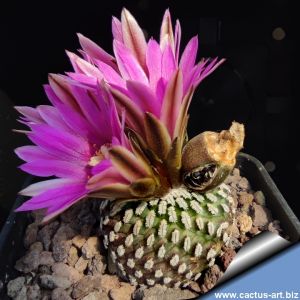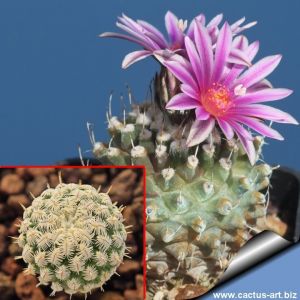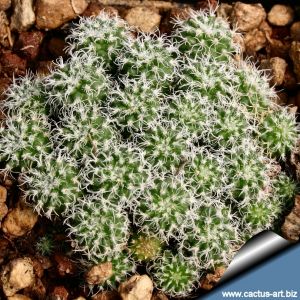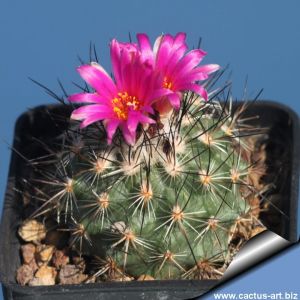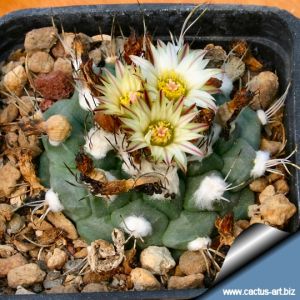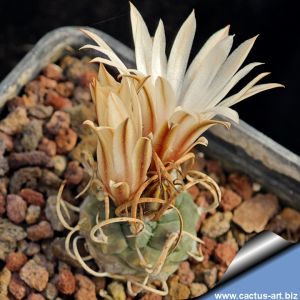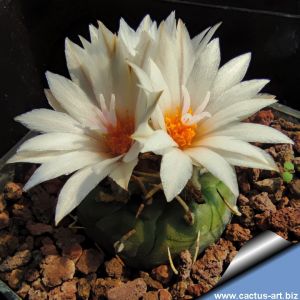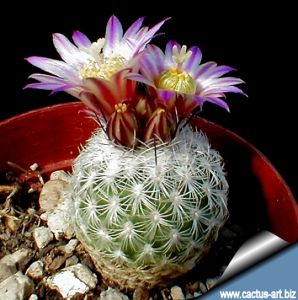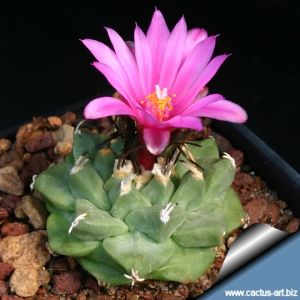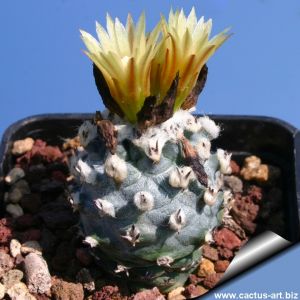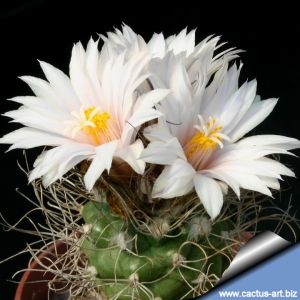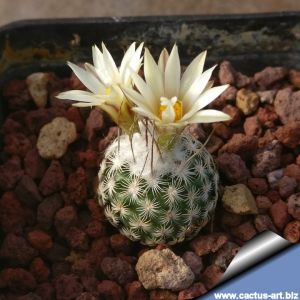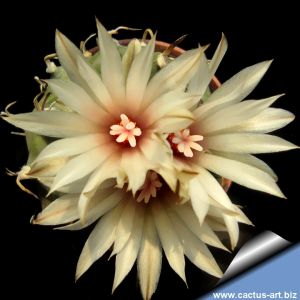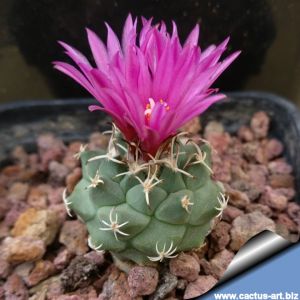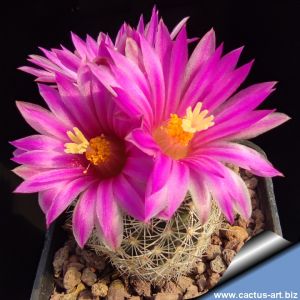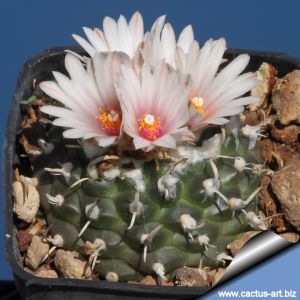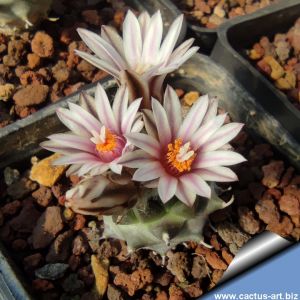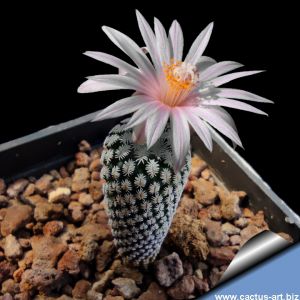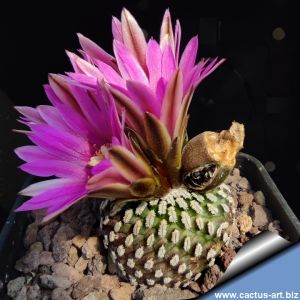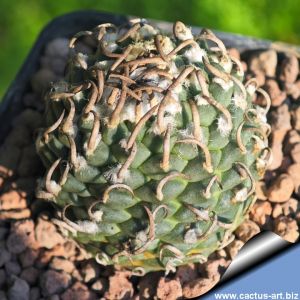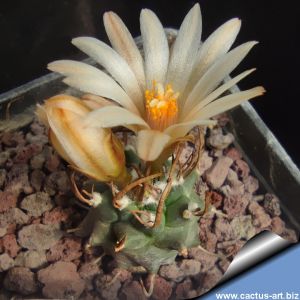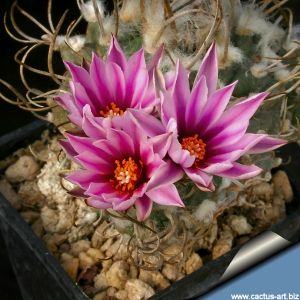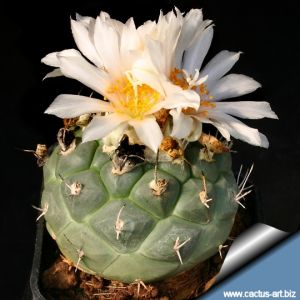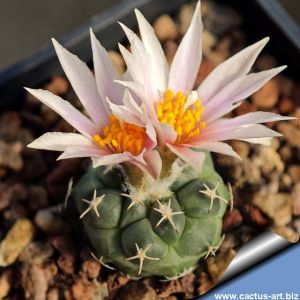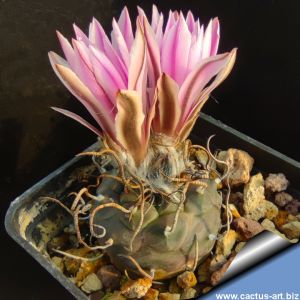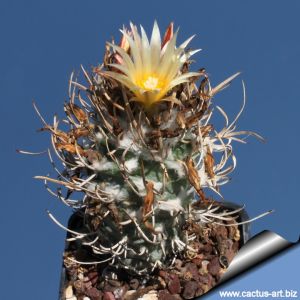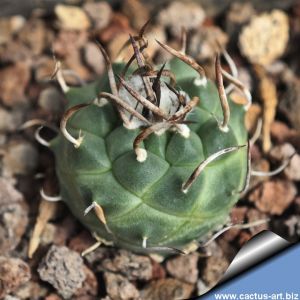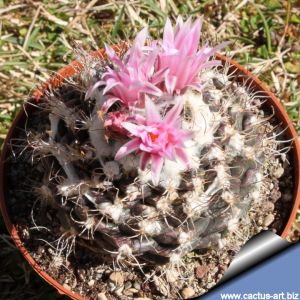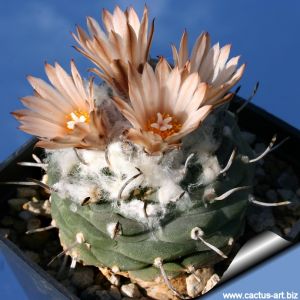-
1
Turbinicarpus pseudopectinatus is an extraordinary cactus with many small spirally-arranged tubercles tipped with tiny white spines in a comb like formation. Flowers are pinkish white to bright pink with darker magenta or reddish-brown mid-veins.
-
2
T. mombergeri è un ibrido naturale tra T. pseudopectinatus e T. laui. Inizialmente presenta spine pettinate (come T. pseudopectinatus) ed è precocemente florifero. Con l’età, molte piante sviluppano spine più lunghe. La specie mostra una significativa var
-
3
-
4
-
5
-
6
Tubercoli a forma piramidale con appena 3 spine, morbide e suberose, solcate da fessure trasversali. Spesso ne rimane solo una. I fiori, bianco avorio, presentano tenui striature magenta lungo la nervatura mediana.
-
7
-
8
Corpo allungato ed elegante con un'affascinante combinazione di spine bianche radiali e nere centrali. I fiori, particolarmente decorativi, variano tra tonalità crema e rosa acceso.
-
9
Turbinicarpus alonsoi is a small cactus with a large tap-root, and only the apical part of the stem exposed at soil level. The spines are flattened, cardboard-like, grey with dark tip, irregularly bent inwards, frequently weathered, not piercing.
-
10
Selezione speciale del famoso Turbinicarpus flaviflorus, con spine brevissim e suberose, di colore marrone dorato. Il fusto, ricoperto in una pruina glauca tendente al bianco. Una pianta raffinata e immediatamente riconoscibile.
-
11
Cactus minuti con lunghe spine centrali, sottili, morbide e ricurve. Producono deliziosi fiori bianchi già in esemplari giovani. Piante di grande bellezza!
-
12
Turbinicarpus schmiedickeanus ssp. dickisoniae is similar to Turbinicarpus schmiedickeanus ssp. gracilis the closest variety. Radials spines 18-24 white 2mm long on young areoles (areole in old specimens have only central spines).
-
13
Turbinicarpus schmiedickeanus è un minuscolo cactus quasi interamente interrato. Il corpo è discoidale e piatto in superficie, ma presenta tubercoli prominenti che si innalzano rispetto al livello generale del fusto.
-
14
Turbinicarpus alonsoi is a small cactus with a large tap-root, and only the apical part of the stem exposed at soil level. The spines are flattened, cardboard-like, grey with dark tip, irregularly bent inwards, frequently weathered, not piercing.
-
15
Gymnocactus beguinii is a small usually solitary, globose cactus with magenta funnel-shaped flowers. The anthers are dark chrome yellow. The style is creamy white.
-
16
Fusto verde-bluastro scuro, semigloboso e depresso, suddiviso in tubercoli che si fonde in una radice tuberosa lunga 3-5 cm. Fiori crema chiaro con sfumature rosate e gola rossastra. Fioritura precoce in inverno (gennaio-febbraio in Europa).
-
17
Corpo compatto di colore verde glauco, con tubercoli piramidali, ciascuno munito di una singola spina centrale. Le spine, di consistenza suberosa, sono leggermente curve e rivolte verso l’alto, convergenti al
centro della pianta in modo caratteristico.
-
18
In giovane età mostra solo spine corte e pettinate; crescendo sviluppa spine centrali lunghe e contorte. Fiorisce presto, regalando delicati fiori color crema con venature rosa.
-
19
Un piccolo cactus geofita, con tubercoli disposti a spirale, ciascuno sormontato da minuscole spine bianche disposte a pettine. Produce fiori appariscenti, dal rosa vivido al magenta intenso, con venature centrali più scure, tendenti al rosso-marrone.
-
20
Piante massimo di 20-35 mm con tubercoli piramidali a 4 spigoli, verde glauco a ocra. Radice napiforme. Spina centrale singola, cartacea con cuticola screpolata e curvata verso la cima della pianta. Fiori bianchi con linea centrale rosa o magenta tenue.
-
21
Corpo grigio con tubercoli conici, le spine sono suberose e rivolte verso l'alto. Fiori color crema. Un piccolo gioiello.
-
22
Fiori spettacolari rosa vivace, con una vivida striscia mediana porpora che percorre ogni petalo. Semplicemente magnifico!
-
23
Turbinicarpus con grandi fiori bianchi o rosa pallido, e fusto solitario, globoso, verde-bluastro e leggermente depresso, con apice lanoso. I tubercoli poco sviluppati, bassi e arrotondati, le conferiscono un aspetto simile a una piccola Lophophora.
-
24
Bella forma con fusto più grande e fiori bianchi.
-
25
Bella forma con corpo verde-bluastro, spine bianche, corte e rigide, e fiori bianchi di grandi dimensioni.
-
26
I boccioli, ben celati nella lanuggine apicale, sbocciano in fiori dai toni più intensi rispetto alla ssp. schwarzii standard. I petali rosa acceso con linea centrale magenta scuro creano un effetto cangiante unico.
-
27
Cactus minuscolo forma di pagoda con tubercoli conici ben marcati. 4 spine morbide e suberose.
Fiori giallo-verdastri (2-3 cm), vero tratto distintivo, come suggerisce
il nome "flaviflorus" (dal latino "fiori gialli").epiteto latino.
-
28
Pianta con epidermide verde chiaro. Tubercoli appiattiti, a quattro angoli, di forma romboidale, larghi e tozzi. Presenta 1-3 spine, di cui una molto più lunga delle altre. Fiorisce con fiori bianchi all’apice.
-
29
Cactus di piccole dimensioni, di forma globosa e compressa, dal corpo grigio-azzurro con ampie areole bianche e lanose. Le spine, sottili e ricurve, sono bianco-ialine con apici più scuri; in cima sbocciano splendidi fiori rosa molto appariscenti.
-
30
Turbinicarpus jauernigii è un minuscolo cactus con fusto globoso-appiattito, di colore grigio-verde fino al porpora, che si fonde in una robusta radice tuberosa. I fiori sono chiari, tendenti al rosa-beige, con una striscia centrale marrone.

